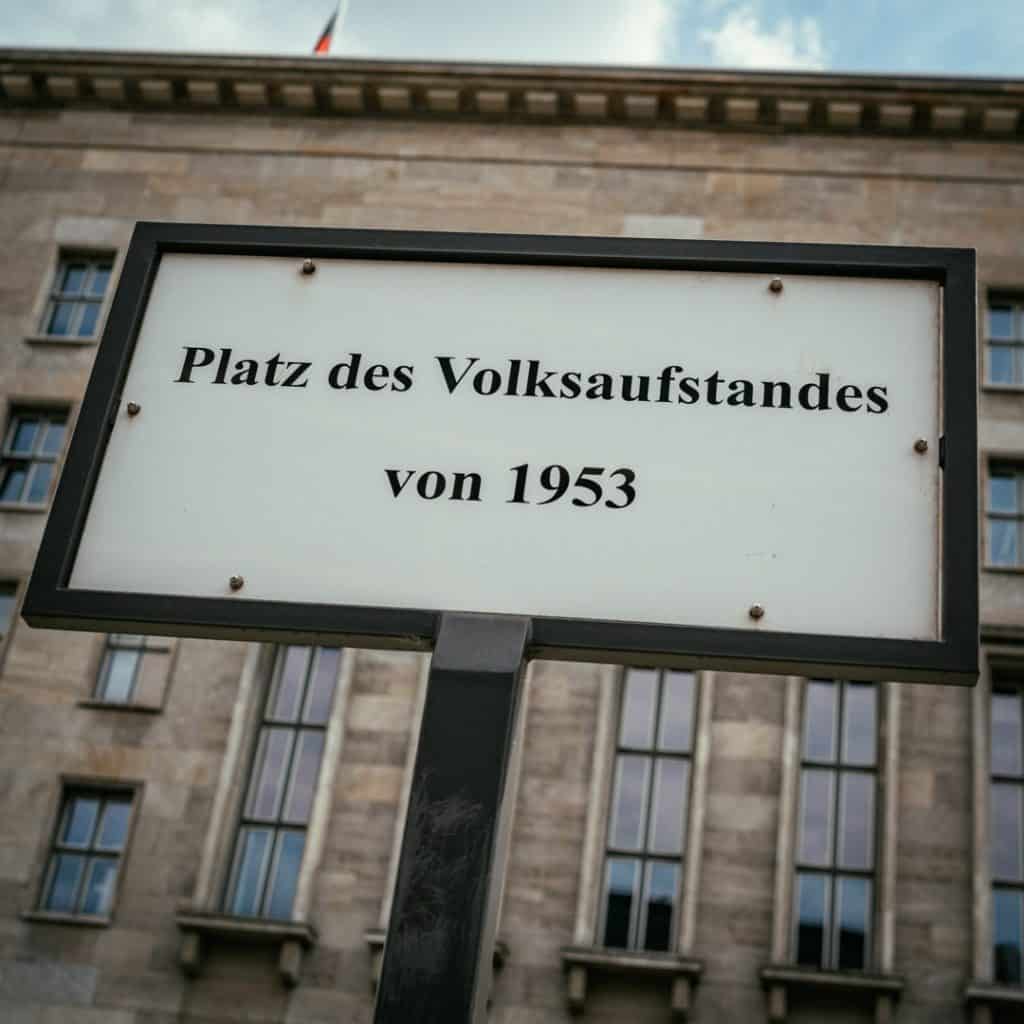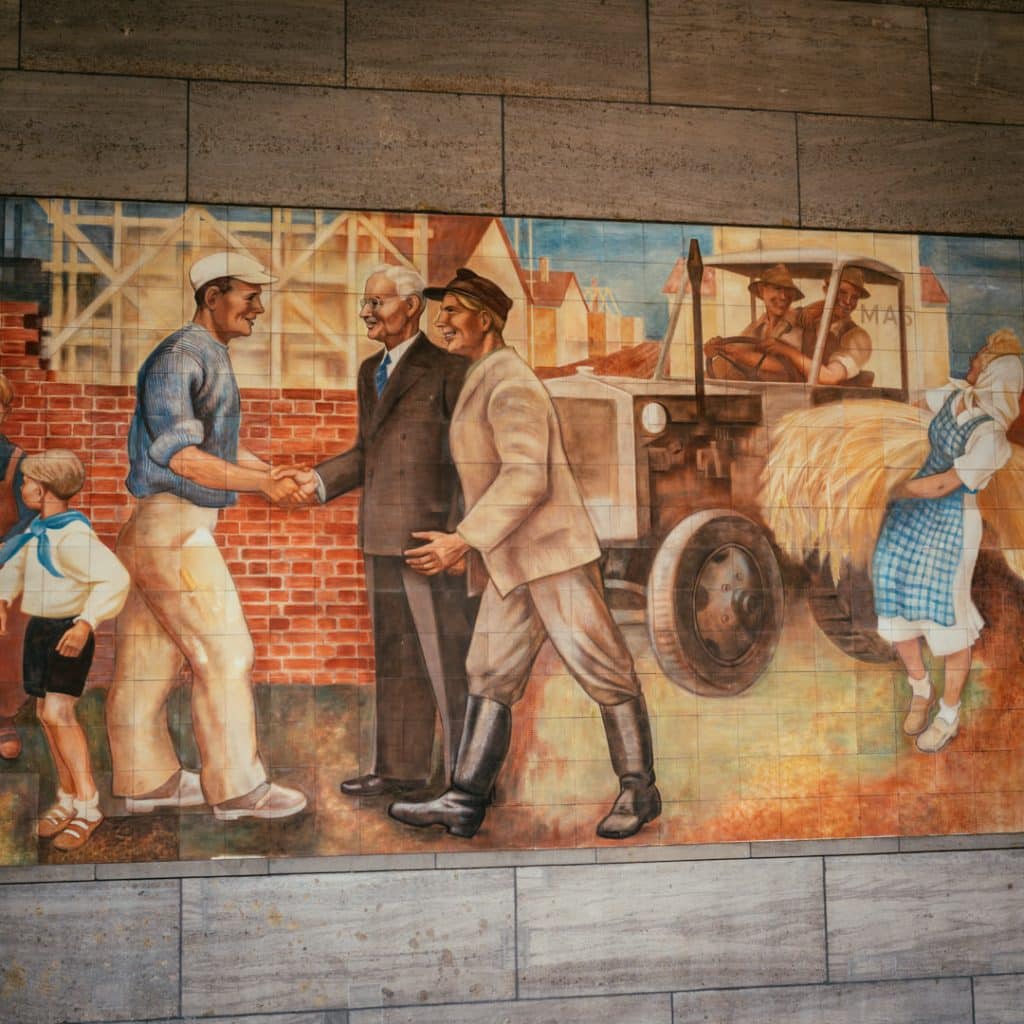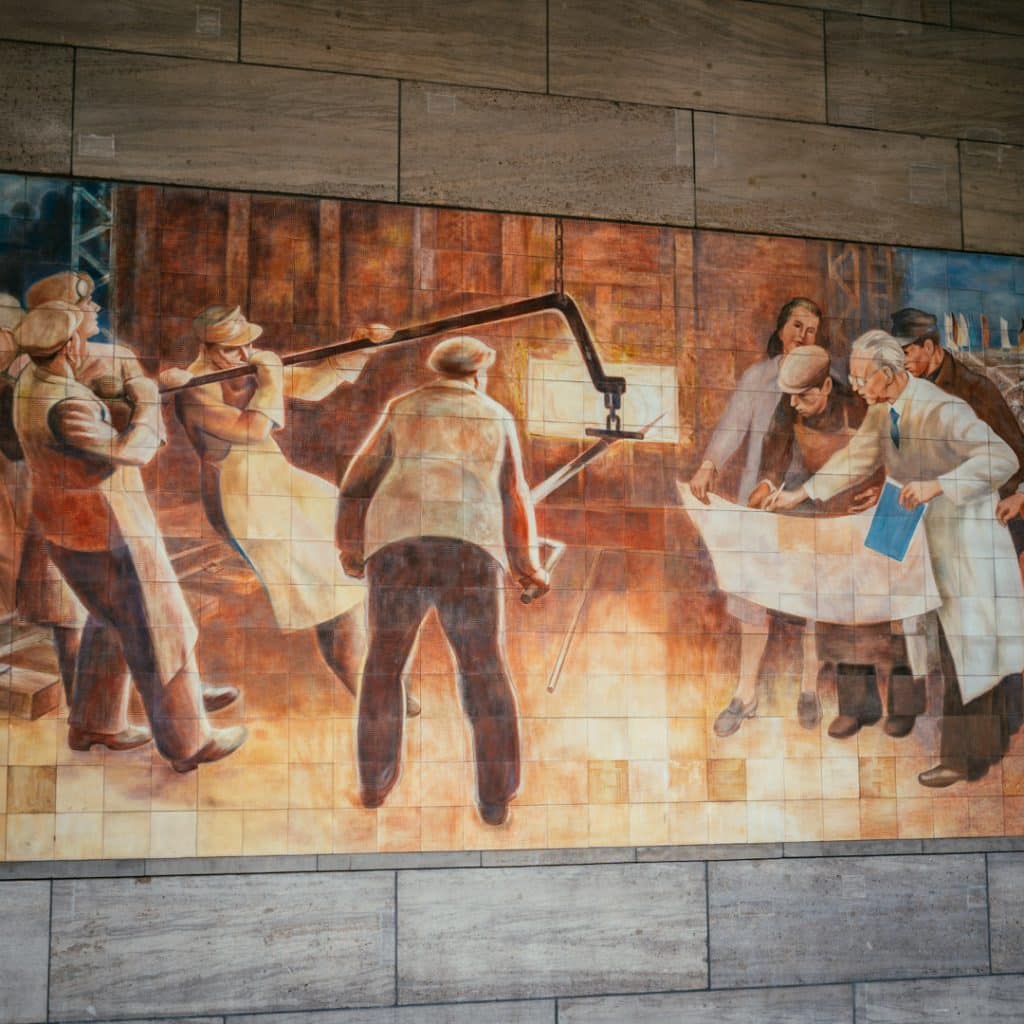


That while the image on the floor depicts the protestors in 1953; the mosaic nearby on the outer wall of the former Nazi Aviation Ministry was added as a vision of the East German Socialist paradise. Painted on Meissen tile, the artist was asked to revise the work no fewer than five times to correct this vision.


Some useful links: